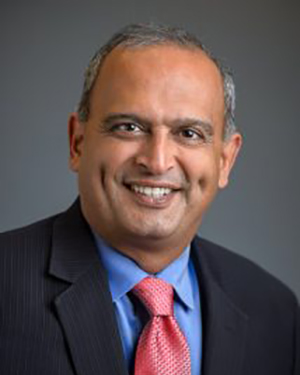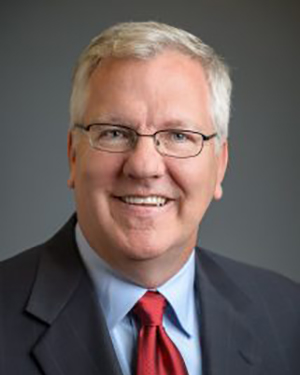A look at One Fund’s strategy for real estate in smaller markets
Boutique real estate firm Edgewater has launched its largest private equity real estate fund ever. The $100 million Edgewater Real Estate Growth and Income Fund LP is relatively small compared to some commercial real estate industry mega-funds. Yet Edgewater sees its business model as a model that fits neatly into a gap in the market. They are targeting smaller metros that have been sidelined by large investors, and their pragmatic management helps uncover value-added opportunities in markets that are dominated by fragmented ownership.
Originally founded in 2008 as an advisory company assisting lenders with distressed assets, they began providing appraisal services following receivership and trustee work on behalf of lenders. That focus led to property buying opportunities, and Edgewater began raising capital and structuring private placement and real estate funds in 2011.
WMRE Recently spoke with Edgewater’s founding partners Robert M. Brier and Ketan Vora to learn more about the firm’s investment strategy and the opportunities to acquire property in smaller metros.
This interview has been edited for style, length and clarity.
WMREWhat is your firm’s history with private equity real estate funds?

WMREQ: Who are your investors or capital sources?
Ketan Vora: All are accredited investors, primarily individuals with high net worth who are very successful in their careers, as well as individuals who have operated large businesses and either sold them or continue to operate them. So, we have a really good diversified mix of investors.

WMREWhat do you attribute to that retention rate?
Ketan Vora: It is a combination of factors. It starts with trust and transparency. This is really the most important part of investing when you are dealing with other people’s money. In part due to our professional background, we are very comfortable with the fiduciary role of protecting other people’s assets in the receivership we do on the advisory side of our business. Transparency is also important when you hit some bumps. You have to be really transparent on what the game plan is. At the end of the day, investors invest with you not only because they like you and they trust you, but they also expect returns. We have been able to execute the plan we have for investment. We stick to the investment norms and don’t shy away from it. This along with our operational background has allowed us to deliver returns.
Investors also love our unique strategy. We are diversified in property types across the overall sector of real estate. We do take some renovation risks, but we don’t do any infrastructure development. So, we don’t have any stabilization risk. It is a diversification approach, and it is an approach to access markets that are very fragmented.
WMREWhat is your overall investment strategy?
Ketan Vora: This existing fund is a value added fund, and it is a patient money fund that will invest in income-producing real estate properties. Some of these investments will be, as we call it in the business, some hair on it and assets will need to be rehabilitated. By repositioning, I do not mean only from a renovation standpoint, but also from a business standpoint, business plan or process and personnel with extreme focus on support. In some cases, this means introducing an element of social media, if they don’t have them, and creating an impact through better marketing.
WMREWhat type of properties and geographic markets are you targeting?
Ketan Vora: The firm has invested in hospitality, neighborhood retail, office, multifamily, mixed use, student housing and industrial. We generally like to take a long term view on things. So, we are not pinball machines. We make a core operating impact on the property and community in a positive sense. And because we are in the secondary and tertiary markets, community involvement is very near and dear to our hearts. Currently, we are active in Pennsylvania, Georgia, Florida and Alabama, and we have previously worked in New Jersey, Delaware and the Carolinas.
WMRE: It seems like a pretty wide canvas. What is your strategy for finding deals?
Ketan Vora: We’re focused on the Mid-Atlantic to the south. We have a “land and expand” strategy. So, what we do is find a good asset to break into the market. If it’s a market that we already know, through past investments or through our advisory business, it becomes more beneficial for us to continue to expand there. We like communities that have diverse demand generators, no matter what asset segment we are looking at. We shy away from markets that have one employer that dominates the market. Typically, we look for county seats and jurisdictions that have a hospital system, a school system, a mix of diverse business and leisure, retail services, and tourism. You really need those many aspects to manage your risk. If you have variety in demand where you are, it really allows you to weather the ups and downs.
Robert M. Brier: We have been implementing the investment thesis that Ketan outlined for more than 10 years. So, this new fund is a continuation of the same work we’re doing — investing in these communities, expanding on the businesses we buy, targeting similar returns and making good on returns for investors. We are comfortable with the size of the fund and our ability to trade through our network of brokers, bankers and past vendors. People know they can count on us to close a deal versus just throwing a number at the wall and seeing if we can finance it later. Our underwriting and pragmatic management gives sellers confidence that when we make an offer and enter an LOI, we are serious and want to close and we don’t just want to do business again.
WMRE: Some people view cities like Atlanta and Tampa as a secondary market. How are you defining secondary markets?
Ketan Vora: To your point, we look at Tampa and Atlanta as the primary markets. In Georgia, we’re in Storm Mountain. In Florida, we’re in Tallahassee, which we think fits into the secondary bucket. We are also in tertiary markets such as Punta Gorda, Apalachicola and Destin.
WMREWhat are you looking for in investment opportunities in those smaller markets?
Ketan Vora: In general, what you find is pretty much fragmented. The assets are mainly owned by local operators which have some limitations as they have not built their own platform or their own team in many markets. Therefore, their bandwidth—from capital to execution to leverage to expansion capabilities—is quite limited. These are markets where you typically compete with a lot of local operators and businesses, but they don’t have the scale with the firepower of equity or debt relationships that we have with lenders that give us a very Create formidable buyers who can execute. The other part of this is that we are in markets that are too small for the big guys to play in. Trying to build an infrastructure to justify the volume of deals becomes too long for a strategy when you have to deploy $1 billion at a time.
For us, doing a “land and expand” strategy allows us to choose different asset classes in and around one market and then grow in another market. As an example, we entered the Florida panhandle through the acquisition of a small boutique condo hotel project. We expanded to another acquisition in Pensacola and then were able to enter Tallahassee with some smaller multifamily and student housing acquisitions. We’ve built it up with retail, office park and hotel acquisitions. We opened an office in Tallahassee, which allowed us to expand into Destin, which bridged the gap by moving to mobile. Once you have the infrastructure sprinkled 1.5 to 2 hours from each other it becomes very easy to start taking advantage of the resources including manpower and procurement.
WMREWhat average size deal do you want to get?
Ketan Vora: In the new $100 million fund, we’re looking at $5 million to $20 million at the acquisition price, although there are other costs in terms of renovations and refurbishments.
WMREDo you have a target return you want to pass on to investors?
Keen Vora: Obviously, we can’t promise returns, but we generally won’t do a deal unless we are at 20+ percent IRR, regardless of the holding period.
WMREIt’s early days for this fund, but what kind of acquisition opportunities do you expect to explore?
Ketan Vora: It is a mixture. There are portfolio acquisitions taking place where some people want to dispose of multiple assets. So we have seen that there is a need for a large fund which can manage those opportunities. The second opportunity we’re seeing is people who have owned assets for a while, and are getting older and want to make their assets less complicated. What they are looking for is definitely close and they are also the people who are going to take care of the property. If there are employees, they also want to make sure they are treated fairly. This doesn’t mean automatic employment, it’s more about demonstrating a professional way of running things and being a participant in the community.
We are seeing some early glimpses of the crisis that will begin to manifest in some areas as a result of COVID and its aftermath. Some of these businesses are running out of equity capital and lenders have started coming in where there is no change in vision. Some owners are now dealing with COVID now starting the third year. So, some fatigue is occurring, and it will come into play as some reserves are depleted. We’re in the early stages, but we think we’re in a very good position to take advantage of that. Finally, through our advisory business, as we begin to pick up on the crisis-related advisory business, that will allow us to get a pipeline of deals that we’re not opposed to.
Robert M. Brier: We also see large real estate players selling non-core properties to exit the market, at times because they are under-managed. We have an opportunity to go in and breathe life into it and make some modifications. We network with those players, and a lot of those deals come to you off-market when you are known to be a reliable buyer who is well financed with good underwriting.






